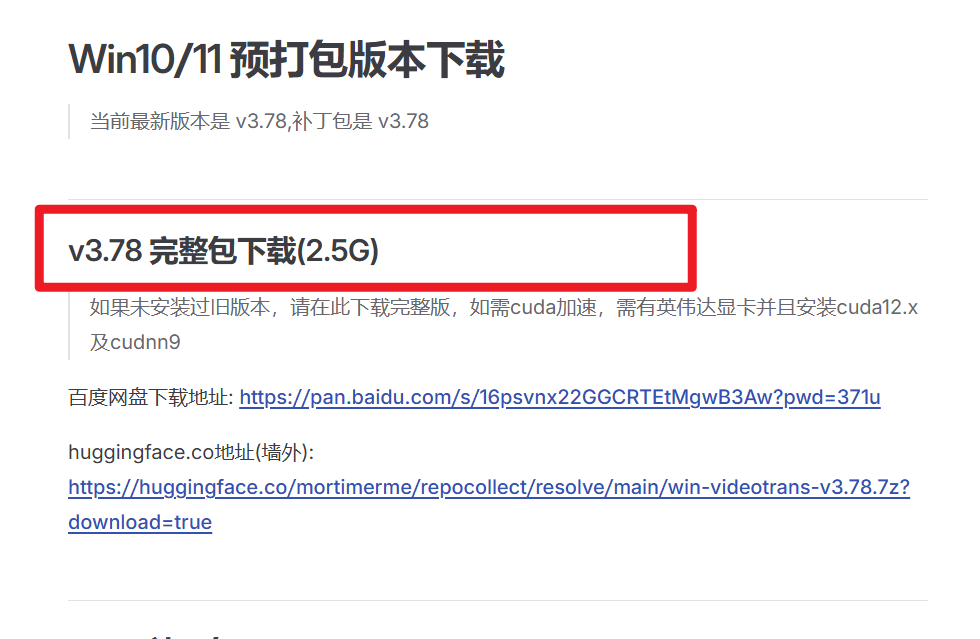Easily Understand and Fix the cudaErrorNoKernelImageForDevice Error

If you encounter a long and confusing error message like this while running the pyVideoTrans program:
Traceback (most recent call last):
File "videotrans\task\_only_one.py", line 43, in run
File "videotrans\task\trans_create.py", line 371, in recogn
File "videotrans\recognition\__init__.py", line 236, in run
File "videotrans\recognition\_base.py", line 75, in run
File "videotrans\recognition\_overall.py", line 155, in _exec
RuntimeError: err[msg]=_process:parallel_for failed: cudaErrorNoKernelImageForDevice: no kernel image is available for execution on the deviceDon't worry—this usually isn't a serious issue. The key error message is: cudaErrorNoKernelImageForDevice: no kernel image is available for execution on the device
Root Cause: The PyTorch library embedded in your current software is incompatible with your computer's graphics card environment (NVIDIA driver or CUDA version). It's like trying to use an old key with a new lock—they just don't work together.
Solution: Address the Specific Issue
Choose one of the following solutions based on your situation.
Case 1: If You Upgraded the Software via a "Small Patch"
Full pyVideoTrans Download Link: https://pyvideotrans.com/downpackage
If you upgraded from an older version below v3.76 by downloading and overwriting with a small patch (e.g., around 360 MB in size), you might be facing this issue.
Reason: To keep the upgrade file small, the patch may not include the latest AI computation core libraries fully compatible with newer drivers.
Solution: Visit the official website or download page and download the latest full installation package (approx. 2.5 GB), then perform a clean overwrite installation. The full package includes all necessary components to ensure the software works perfectly with your graphics card environment.

Case 2: If You're Using the Full Package or Encounter the Error on First Installation
If you're sure you're already using the latest full package but the problem persists, it's likely that your computer's graphics card environment needs an update.
Step 1: Check Your Graphics Card Environment
- Press
Win+Ron your keyboard to open the Run dialog. - Type
cmdand press Enter to open the Command Prompt. - In the window, enter the following command and press Enter:bashThis command shows the highest CUDA version supported by your NVIDIA graphics driver. Look for
nvidia-smiCUDA Versionin the top-right corner of the output.

- If you have CUDA Toolkit installed, you can also check its version with
nvcc --version. However, for this issue, the information fromnvidia-smiis more critical.
 (Example output of
(Example output of nvcc --version)
Step 2: Upgrade Your Graphics Card Environment
If the nvidia-smi command shows your CUDA Version is below 12.0, or if nvcc --version shows a CUDA version below 12.0, you need to upgrade.
- Solution:
- Update NVIDIA Graphics Driver: Go to the NVIDIA website, download and install the latest driver for your graphics card model. This is the most important step.
- Install Matching CUDA and cuDNN: The software relies on the correct CUDA Toolkit and cuDNN libraries to function properly.
To ensure a smooth installation, follow the step-by-step tutorial with images at the link below:
Detailed GPU Environment Installation Tutorial
The cudaErrorNoKernelImageForDevice error is a signal of "version mismatch."
- First, check the software: Did you use a small patch for upgrade? If yes, switch to the full package.
- Then, check your computer: Is the software fine? Then upgrade your graphics driver and related components.
